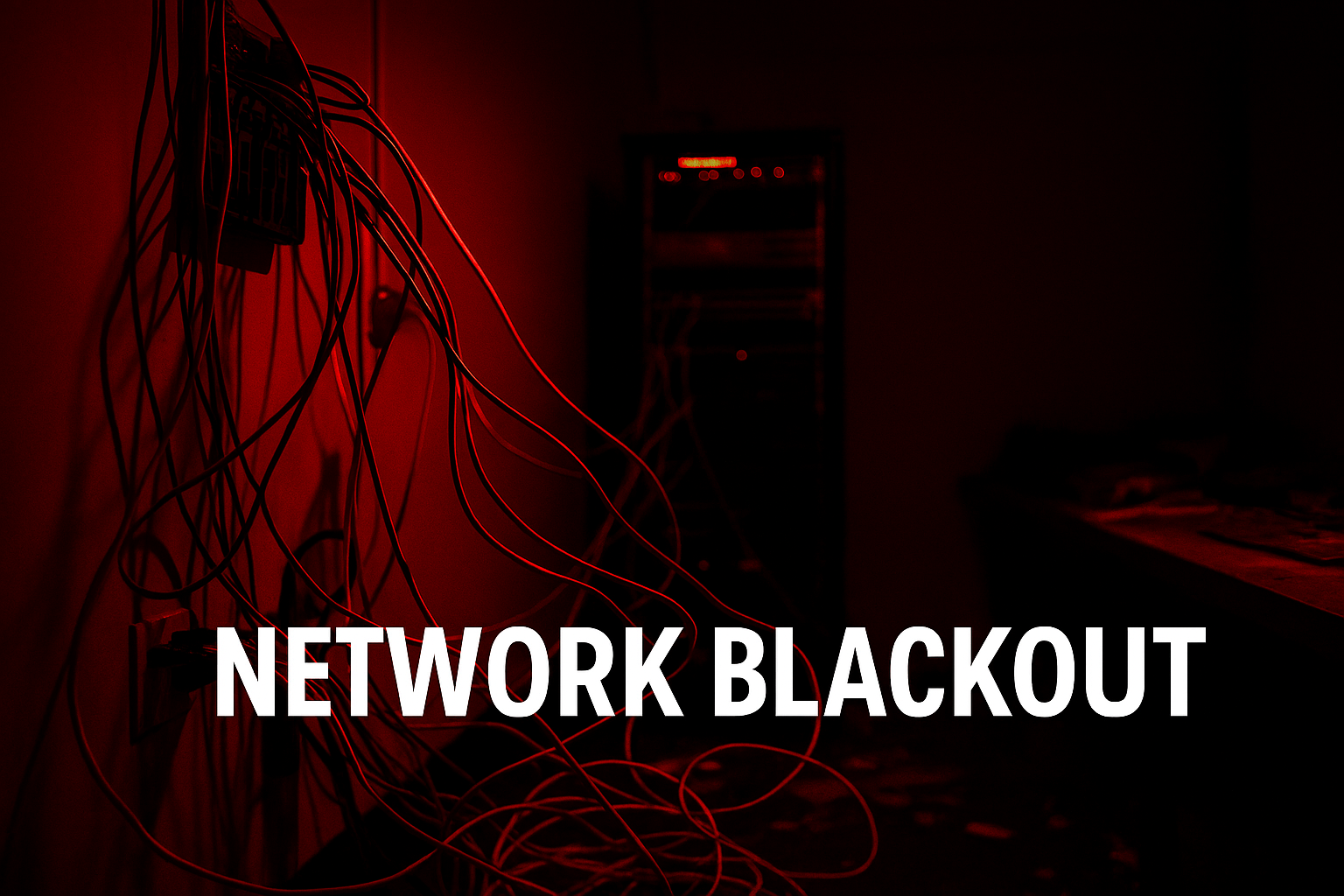This is a story of home lab failure recovery that taught me more than any textbook.
Yes, I locked myself out of my home lab in spectacular fashion. Even my go-to Kali Linux toolkit couldn’t bail me out. This wasn’t a simple reboot—it was a full network blackout. But here’s why I’m not embarrassed: this unique failure taught me critical lessons about resilience, planning, and designing systems that don’t break in production. Here’s the story of my latest lab misadventure, what I learned, and how it’s sharpening my skills for real-world environments.
What Went Wrong
It started with a routine tweak: troubleshooting my storage VLAN (a virtual network for isolating traffic). My firewall rules weren’t cooperating, so I changed one port on my Layer 2 switch from tagged to untagged. One small change, one big mistake. My management VLAN—the core of my network control—went offline. No router access, no hypervisor (my virtualization platform), no switch interface. Nothing.
I tried every trick in the book: MAC spoofing, IP manipulation, and Kali’s penetration testing tools. No dice. This wasn’t a repeat of past lab failures—this was a new kind of chaos that caught me off guard. The root cause? I made the change without a rollback plan or snapshot, isolating my admin interface with no fallback. In a production environment, this would’ve been catastrophic. In my lab, it was a wake-up call.
TL;DR: A single port misconfiguration killed my management VLAN. No access, no recovery. Always plan for rollback.
Why This Matters in Production
This wasn’t just a lab misstep—it exposed a critical design flaw. In my rush to “make this version work,” I overlooked the CISSP domain of Business Continuity and Disaster Recovery Planning (Domain 7), which emphasizes recovery mechanisms like rollback plans, validated backups, and emergency access. This was a new kind of failure for me—not a repeat mistake, but a humbling lesson in prioritizing functionality over resilience. In a production environment, the fallout would have been severe:
- Hours of downtime
- Disrupted critical services
- Potential data loss
- Tough conversations with stakeholders
- A serious hit to credibility
By focusing on getting my VLANs operational, I neglected guardrails like a dedicated emergency access port or a tested recovery plan—core tenets of Disaster Recovery Planning (DRP). CISSP principles aren’t just theory; they’re lifelines for ensuring systems can recover swiftly and securely. Treating my lab like a production environment is now sharpening my instincts to prevent and handle real-world crises.
TL;DR: Overlooking recovery planning amplifies failure. Practice CISSP’s BCP and DRP principles to build production-ready resilience.
The Oversight: No Emergency Access
My biggest mistake? No dedicated emergency access port. A simple physical port with untagged access to the management VLAN would’ve saved hours. Instead, I rebuilt everything from scratch—router configs, VLAN tags, hypervisor bridges, and VM IPs. In any professional setup, out-of-band access (like IPMI or a serial adapter) is a must. This failure taught me that fail-safe design isn’t optional—it’s the foundation of resilience.
TL;DR: No emergency access means no recovery. Build a lifeline into every network.
Why I Skipped the Backup
I had a backup but didn’t restore it. Why? A flawed config would’ve just recreated the issue. The real problem was my lack of versioning or validation for backups—core principles of CISSP’s Asset Security (Domain 2) and Operations Security (Domain 5). Backups must be versioned, validated, and tested regularly. Otherwise, they’re just digital paperweights. Without incremental snapshots or change logs, I resorted to a manual rebuild—time-consuming and risky. In production, backups must be automated, versioned, and tested. Anything less is a liability.
TL;DR: Unvalidated backups are useless. Automate and version to avoid manual rebuilds.
Why I Stress-Test My Lab
This VLAN blackout wasn’t a repeat of past mistakes—I’ve broken my lab before, but this was a new challenge. I intentionally push my setup to its limits to simulate real-world pressure. Chaos engineering, popularized by companies like Netflix, isn’t just for tech giants—it’s for anyone building resilience. But random failure isn’t enough. I’m now thinking of designing purposeful tests: simulating outages, measuring recovery times, and documenting responses to build precision, not just pain.
TL;DR: Stress-test your lab to build instincts, but do it with purpose. Random chaos isn’t progress.
Key Takeaways from the Chaos
Running a segmented, firewalled home lab is exciting—until it collapses. Lessons learned:
- VLANs are powerful but brittle if misconfigured
- Firewall interfaces depend on stable VLANs
- Backups require validation to be reliable
- Documentation is your lifeline in a crisis
Infrastructure as Code (IaC) is the gold standard. If I can’t redeploy my lab with a single command, I’m not resilient—I’m reactive.
TL;DR: Segmentation needs visibility and fallbacks. Document everything, test rigorously.
How I’m Strengthening My Lab
Here’s my plan to prevent this failure from happening again:
- Dedicated emergency access port for the management VLAN
- Checklists for VLAN changes with rollback plans
- Static IPs for hypervisor management
- Offline documentation of VLAN/IP mappings
- No core network changes without a fallback
- Sanitized logs for any public sharing
This aligns with Security Governance and Risk Management principles. I’m turning this incident into a formal incident response playbook, complete with failure scenarios, recovery steps, and preventive controls. Resilience comes from planning, not panic.
TL;DR: Build for failure with documented procedures and secure fallbacks.
Final Thoughts
Homelabbing lets you play architect, attacker, and defender. This VLAN failure was a new lesson in a long line of experiments, not a repeat mistake. Each crash makes me a better engineer—not because I celebrate failure, but because I use it to build systems that don’t fail. Design for resilience, and you’ll thrive under pressure.
What’s your biggest lab or project failure, and how did it make you better? Share your stories in the comments—I’d love to learn from your experiences!

Leave a Reply